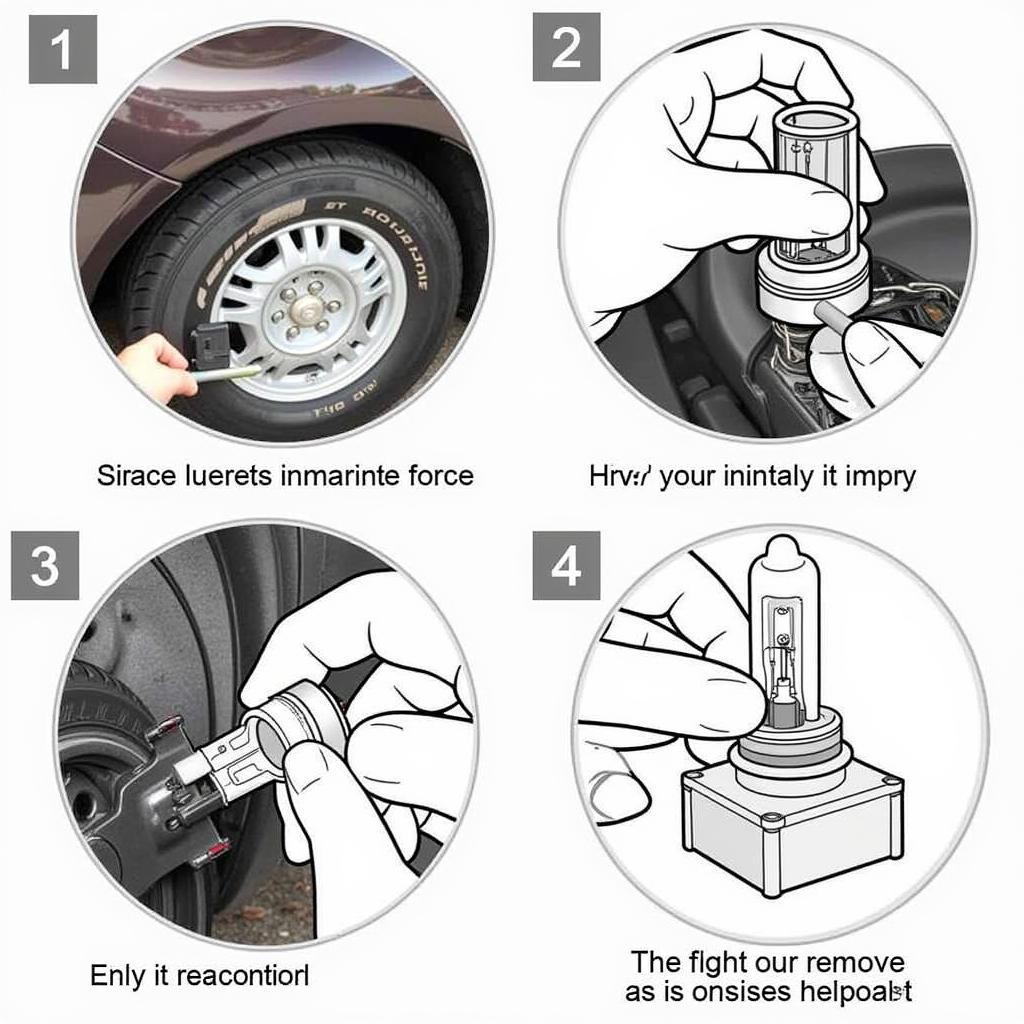A “Lamp Brake Warning Output Circuit Failure” message might sound intimidating, but it’s a common issue that can often be diagnosed and fixed without a trip to the mechanic. This article will guide you through understanding this warning, its potential causes, and how to troubleshoot it.
Understanding the Warning: What does “Lamp Brake Warning Output Circuit Failure” mean?
This warning message, often displayed on your dashboard, signals a problem with the electrical circuit responsible for illuminating your brake lights. It indicates that the signal from your car’s computer to turn on the brake lights isn’t reaching the bulbs properly.
Common Causes: Why is my brake light circuit failing?
Several culprits can cause a lamp brake warning output circuit failure. Here are the most common:
- Blown Fuse: Fuses protect your car’s electrical circuits from overloads. A blown fuse is often the simplest and easiest problem to fix.
- Faulty Brake Light Switch: This switch, located under your brake pedal, signals the brake lights to activate when you press the pedal. A malfunctioning switch won’t send the correct signal.
- Damaged Wiring: The wiring connecting the brake light switch to the lights themselves can become frayed, corroded, or disconnected, disrupting the electrical circuit.
- Burned-Out Bulbs: While less common, a burned-out brake light bulb can sometimes trigger this warning, especially in newer vehicles with more complex electrical systems.
Troubleshooting the Issue: How to Fix a Lamp Brake Warning Output Circuit Failure
Before you begin, it’s crucial to prioritize safety. Have a multimeter and a repair manual for your car model handy.
-
Check the Fuse Box: Locate your car’s fuse box (usually under the dashboard or hood) and consult your owner’s manual to identify the brake light fuse. Inspect the fuse for any visible breaks or burns. If it’s blown, replace it with a new one of the same amperage.
*“Always replace a blown fuse with one of the same amperage to prevent electrical damage.” – John Smith, Automotive Electrician -
Test the Brake Light Switch: Locate the brake light switch above the brake pedal arm. With your multimeter set to continuity mode, check for continuity across the switch terminals. Press and release the brake pedal. The multimeter should show continuity when the pedal is pressed and no continuity when released. If not, the switch likely needs replacement.
-
Inspect the Wiring: Carefully examine the wiring harness leading from the brake light switch to the taillights. Look for any signs of damage, such as exposed wires, corrosion, or loose connections. Repair or replace any damaged wiring as needed.
-
Inspect the Bulbs: Even if your other brake lights are working, inspect all brake light bulbs for any signs of burning out. Replace any faulty bulbs.
Seeking Professional Help: When to Consult a Mechanic
If you’ve gone through these steps and haven’t identified the problem, or if you’re uncomfortable working with electrical components, it’s best to consult a qualified mechanic. They have the expertise and tools to diagnose and repair more complex electrical issues.
_"While troubleshooting basic electrical issues can be done at home, it’s important to remember that safety comes first. If you're unsure about any step, don't hesitate to contact a professional."_ - **John Smith, Automotive Electrician**Conclusion: Safe Driving Starts with Functioning Brake Lights
A “Lamp Brake Warning Output Circuit Failure” shouldn’t be ignored. Addressing this issue promptly ensures your brake lights function correctly, keeping you and others safe on the road. By understanding the potential causes and following these troubleshooting steps, you can often resolve the problem yourself or make an informed decision about seeking professional help.

